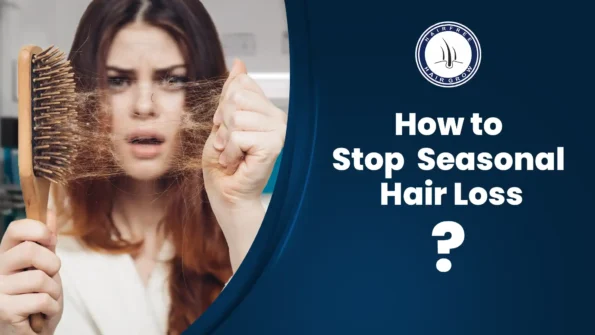Changing seasons bring all sorts of things, some good, some not so good. One not-so-good thing? Shedding more hair than usual. You know, seeing extra hair on your pillow, clogging your shower drain, or stuck in your brush – right around the time the weather changes. is seasonal hair loss normal?
Don’t panic! This hair loss is temporary, because it’s seasonal. Still, losing hair is no fun, so we talked to some hair and scalp experts to get the lowdown on how to deal with it.
What is Seasonal Hair Loss?
Have you ever noticed more hair in your brush or shower drain during certain times of year? You’re not alone! This is called seasonal hair loss, and it’s perfectly normal.
We all lose hair naturally, but some people experience a temporary increase in shedding during spring and fall. This can be alarming, but it’s not due to any illness or stress. Experts believe it has to do with changes in temperature.
Just like our bodies have cycles for sleeping and waking, our hair also goes through growth phases. In the summer, more of your hair is in a resting phase. Then, in the fall and sometimes spring, that resting hair starts to shed and make way for new growth.
While the science isn’t totally clear yet, there’s something about the shift in temperature that seems to trigger this shedding process. The good news is that it’s temporary! Your hair will grow back to its normal thickness within a few months.
Simple Tips for Healthy Hair
Noticed more hair in the drain lately? It might just be seasonal hair loss, a totally normal phenomenon that hits many people during spring and fall. While it can be unsettling to see more hair shedding than usual, there are ways to keep your scalp healthy and minimize the impact.
Nourish Your Scalp
Just like healthy skin needs moisture, so does your scalp! To combat dryness, incorporate a deep conditioning treatment (like a hair mask) into your routine at least once a week, especially during seasonal shifts. You can even try a hot oil treatment with castor or green tea oil, known to promote hair growth. To keep things clean and stimulate your hair follicles, consider adding a clarifying shampoo to your routine as well.
Fuel Your Hair From Within
What you eat affects your entire body, including your hair! Aim for a balanced diet rich in key nutrients for hair growth like vitamin D3, iron, zinc, and B vitamins. Consider adding anti-inflammatory superfoods to your diet and consult your doctor about supplements if you suspect any deficiencies.
Gentle Hair Care is Key
During times of seasonal shedding, be extra gentle with your hair. Avoid tight hairstyles like ponytails or braids that can put stress on your scalp. Minimize heat styling tools like straighteners and curling irons, which can damage hair. Harsh chemical dyes might also irritate your scalp, so consider giving them a break during this time.
Relax and Let Your Hair Grow
Stress can contribute to hair loss, so focus on relaxation techniques to keep your mind and body calm. Remember, seasonal hair loss is temporary. Your hair will naturally return to its normal thickness within a few months. However, if you experience excessive shedding that persists beyond seasonal changes, it’s best to consult a trichologist, a hair specialist who can diagnose the root cause and recommend personalized treatment.
Written By
MBBS, DVD (Skin & VD)
Dr. Ankit Jain is a trusted hair specialist with expertise in Seasonal Hair Loss. He helps patients understand its causes, prevention, and treatment options, offering personalized solutions to maintain healthy hair throughout the year with advanced care and expert guidance.
Disclaimer
We’ve made all possible efforts to ensure that the information provided here is accurate, up-to-date and complete, however, it should not be treated as a substitute for professional medical advice, diagnosis or treatment. See Detailed Disclaimers Here.





